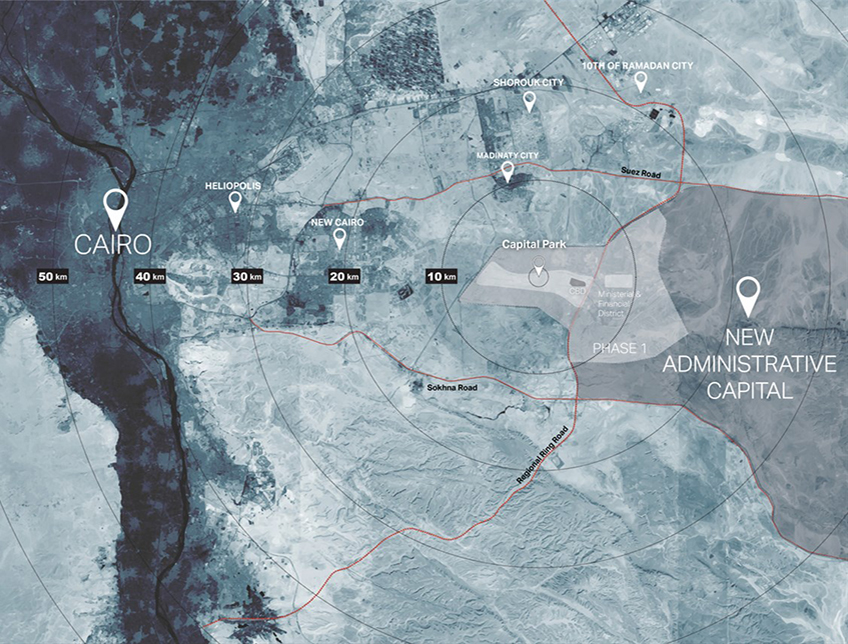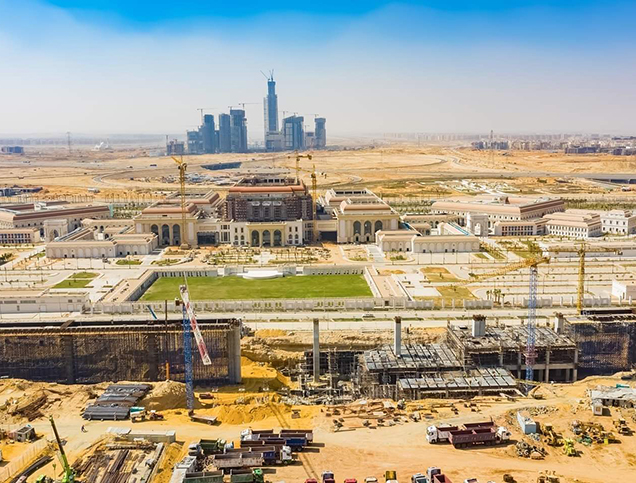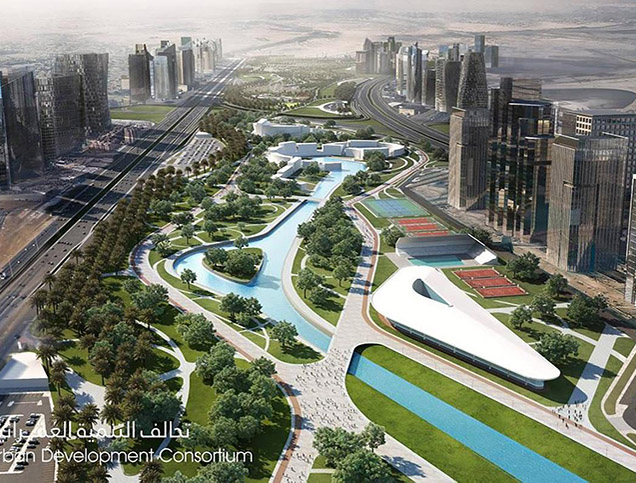
Close

Approach Words: Integrated City, Smart City, Sustainability
Public Policy Instruments: Organization, Physical Intervention, Planning, Regulatory
The New Administrative Capital (NAC), referred to as “The Capital Egypt,” is a transformational urban development project currently underway in Egypt1. It is designed to be Egypt’s new capital city, and a major regional administrative and financial center2. The project underscores the goal of creating a sustainable and technologically advanced “Smart City of Tomorrow” 3, set to boost the country’s economic potential and alleviate congestion in Cairo4 i, in line with the objectives laid out in Egypt’s Vision 2030 strategy5 ii.
Located about 45 kilometers east of Cairo, the NAC spans a total area of approximately 725 km, in one of the country’s most strategic areas midway between Cairo and Suez6. The city’s masterplan features a diverse mix of residential, administrative, and recreational uses and a wide range of amenities7. Specifically, it includes a new government administrative district, a diplomatic quarter, a cultural district, as well as 21 residential districts, and a new airport8. The Central Business District is the commercial artery of the new capital, adopting “smart and sustainable city principles”9. The masterplan of the site also includes The Iconic Tower, a 385 m high skyscraper, set to become the Tallest Tower in Africa10. The core of the master plan features the Green River Park, also referred to as Central Park, designed as a “10-kilometer urban oasis” which “combines natural and man-made elements, offering a variety of historical gardens, leisure activities, eco-conscious landscaping, and distinct zones to cater to a broad spectrum of preferences” and “enrich the ecological landscape of the region”11. In terms of transport and infrastructure, NAC will be linked to Cairo via a newly established Cairo Monorail and will comprise smart infrastructure and energy management systems12

Title: Geographic Location of the New Administrative Capital in Egypt.
Source: Click Here

Title: Rendered masterplan of the first phase of the NAC.
Source: Click Here

Title: Construction site with the Central Business District in its background.
Source: Click Here

Title: 3D render of the Green River Park.
Source: Click Here
The economic, recreational, and administrative activities strive to attract residents and investors, making the New Administrative Capital a smart, connected, and eco-friendly city13. The new capital is projected to accommodate around 6.5 million people. With the administrative district, hosting over 30 new ministries and employing a workforce of 55,000 staff, the NAC is expected to become the administrative heart of the country14.
Since its inception, the project has been progressing in stages, with the first phase focusing on the expansion of the current outskirts of the capital with 168 km2 of development15. This includes erecting pivotal government, diplomatic, and administrative structures, paving the way for the subsequent population influx16. In subsequent phases, the new capital would expand to 700 km2, linking up with the Suez Canal zone17. As of 2023, 14 ministries and government entities have already relocated to the New Administrative Capital18.

Owner/Developer (Public)

Owner/Developer
The project was officially announced in March 201519. The project’s development and management, the Administrative Capital Company for Urban Development (ACUD), is a joint stock company established in 2016. It has a capital of 204 billion EGP (USD 6.6 billion), with major stakeholders such as the Ministry of Housing’s New Urban Communities Authority (NUCA) and the Armed Forces20. The conceptual masterplan of NAC was unveiled in 2015 by Skidmore, Owings & Merrill LLP (SOM), an internationally renowned design firm, and the Egyptian Ministry of Housing and Capital City Partners Ltd21. Dar Al Handasah was later commissioned to assess the Strategic Master Plan, and to design several project components including the Ministerial Zone, the Central Park the Iconic Tower, and several residential, office and hotel buildings22. A main developer behind the project is the Armed Forces Engineering Authority23, in collaboration with the China State Construction Engineering Corporation (CSCEC), Talaat Mustafa Group, and Arab Contractors Co24.
Project Link
Endnotes
References